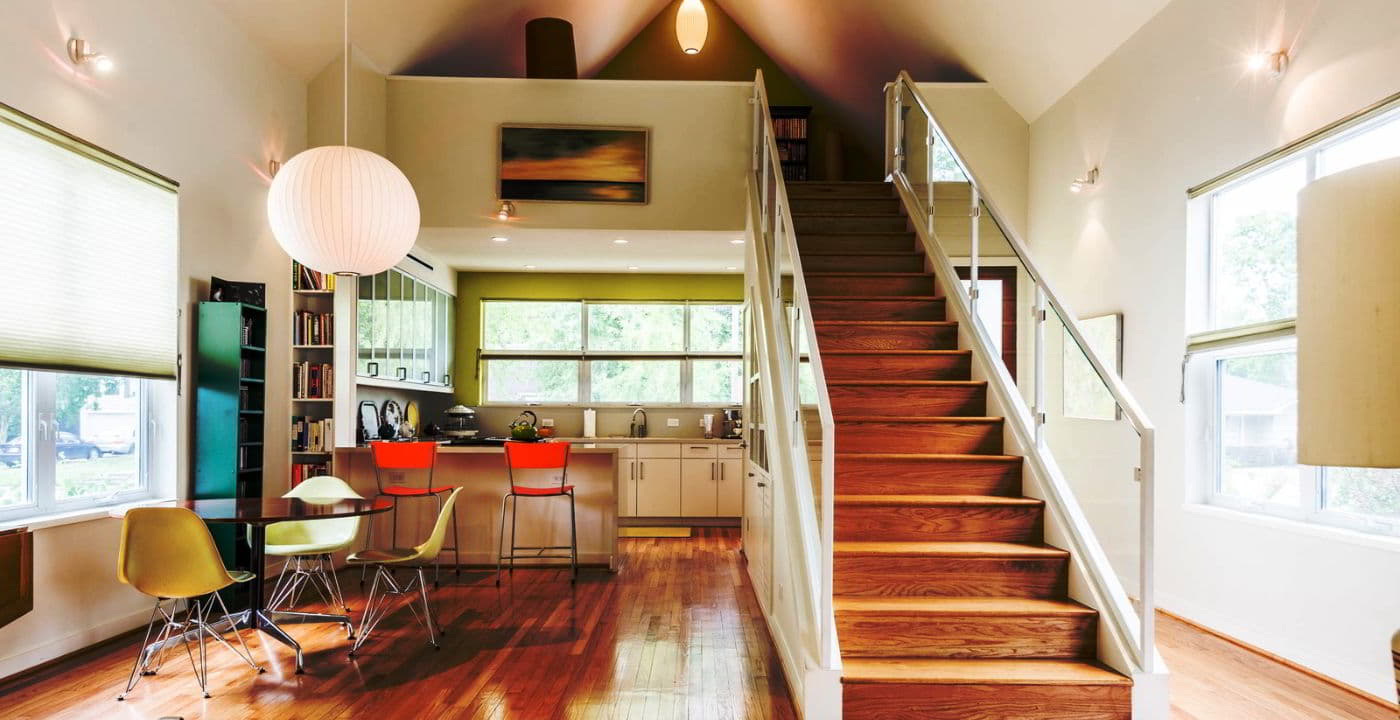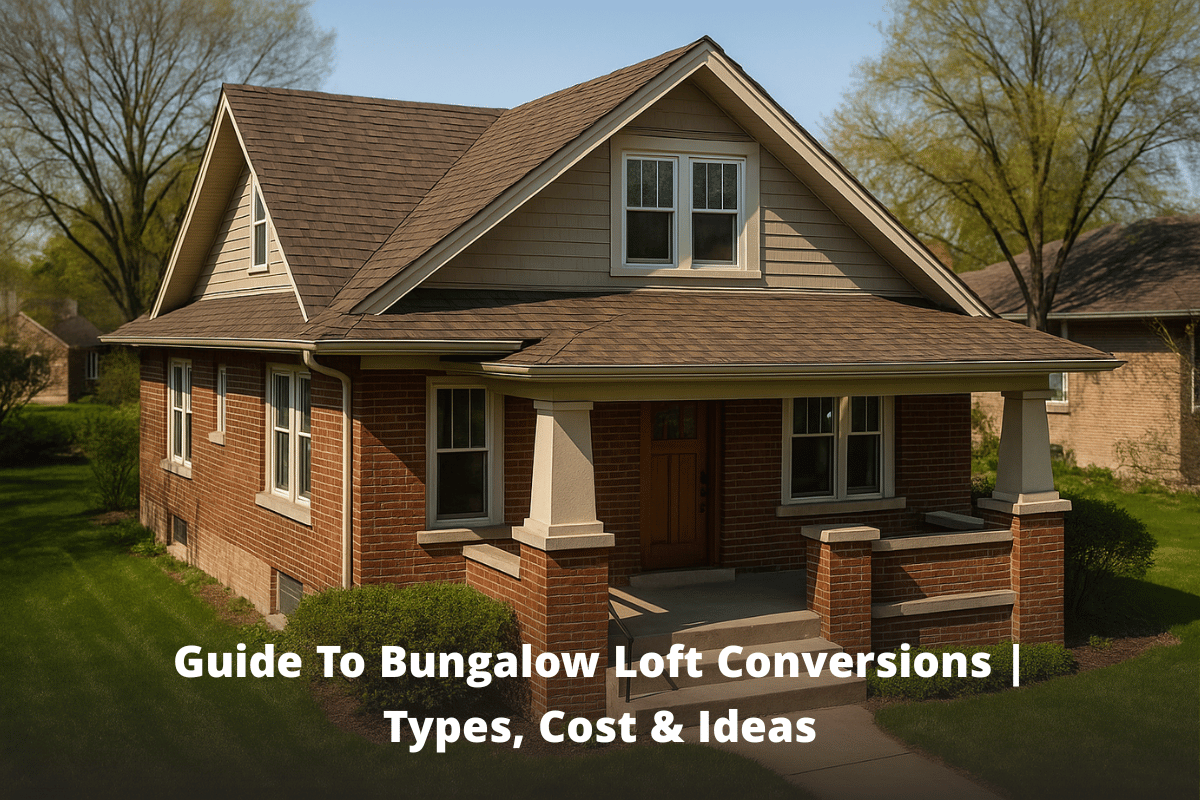
While hammering and dust are inevitable parts of transforming your attic into a living space, smart planning minimises the chaos.
From sealing off work zones to coordinating with builders, we’ll take you through proven strategies to keep your home life running smoothly during construction.
Our expertise in managing loft conversions means less stress and disruption for you – and a beautiful new space to enjoy sooner.
Key Summary
- The most disruptive phase hits early with peak noise and dust during the first two weeks.
- Average loft conversion completion time ranges between 6-12 weeks, with dormers fastest and mansards most extensive.
- Smart preparations like sealed work zones help contain the mess.
How Long Does a Loft Conversion Take to Complete?
Your average loft conversion takes 6 to 8 weeks, depending on how complicated your project is, your property type and if any unforeseen issues pop up.
Here are a few examples of different loft conversion types and what you can expect:
Dormer Loft Conversion

A dormer loft is one of the most straightforward and cost-effective types, as it involves adding a box-shaped structure to create more headroom and usable floor space.
Builders usually cut through the roof to add the dormer, making it faster than other types.
Estimated timeline: 6–8 weeks
Hip-To-Gable Loft Conversion

A hip-to-gable loft conversion extends the sloping side of your roof to create a vertical wall, significantly increasing the loft’s size.
While it’s more complex than a dormer, it’s a great option for properties with a hipped roof.
Estimated timeline: 8–10 weeks
Mansard Loft Conversion

This is the most extensive option. A mansard loft conversion involves replacing one side of your roof with a steep, almost vertical wall and flat roof, maximising space.
It’s ideal for urban properties but involves more time and structural changes, making it more expensive.
Estimated timeline: 10–12 weeks
The Most Disruptive Stages
The start of the project is the loudest. Builders work on structural changes, scaffolding goes up, and tools roar to life.
For the first two weeks, your house may sound like a construction site. Expect dust and noise to peak when walls are removed or floors are reinforced.
Later stages, like plastering and decorating, are quieter but still invasive.
Noise and Dust
Managing noise and dust during a loft conversion is a challenge. Even with careful contractors, fine dust creeps into other parts of the house, and hammering echoes through walls.
Noise is unavoidable during demolition and structural work, but planning can help minimise disruption.
Can a Loft Conversion Be Done Without Disrupting Daily Life?
It’s possible, but don’t expect zero disruption. If you’re staying put, here are some practical tips:
1. Plan Your Days Around the Work
Schedule noisy work during hours when you’re out of the house. Speak with your contractors about timelines so you know what to expect.
2. Create Boundaries
Seal off the loft area and any staircases with plastic sheeting to contain dust. Use temporary partitions to keep work zones separate.
3. Temporary Living Solutions
For the most disruptive days, consider staying with friends, booking an Airbnb, or negotiating a reduced work schedule to avoid the worst of it.
4 Ways To Reduce Disruption From Loft Conversions
Having builders in your home for weeks is bound to come with some disruption. The key is knowing what to expect and how to tackle the chaos.
Here are some tips to keep your home life as normal as possible:
1. Good Planning Is Everything
Start with clear communication. Sit down with your builder and map out a detailed timeline. Ask them if you need to move out during a loft conversion.
Often, the answer depends on your lifestyle and tolerance for noise. If you have kids or pets, consider temporary relocation.
2. Protect Your Space
Invest in good dust covers and seal unused rooms. A professional builder will take measures to protect your home, but extra precautions – like closing doors and sealing vents – make a big difference.
3. Manage Expectations
Let your family know what’s coming. Minimising disruption for families during a loft conversion often means setting clear rules about restricted areas and noise levels.
4. Choose a Reputable Company
Working with a professional loft conversion company helps minimise disruption by ensuring the project is managed efficiently from start to finish.
They’ll handle every detail, from planning permissions and building regulations to structural work. A skilled team knows how to limit the spread of dust, reduce noise where possible, and stick to an agreed timeline, keeping the chaos to a minimum.
They’ll also communicate regularly, so you’re never caught off guard by loud work or unexpected changes.
Loft Conversion Preparation Tips
Follow these tips to keep your life as normal as possible during your loft conversion:
- Declutter by clearing out your loft and nearby rooms
- Protect furniture with dust sheets
- Talk to your neighbours and warn them about potential noise
- Arrange alternate quiet spaces in your home
- Speak to your builder and plan work hours
Pro Tip: Want to cut down on dust even further? Install temporary plastic zip doors with adhesive edges. They’re inexpensive and incredibly effective at containing mess.
Frequently Asked Questions
Do loft conversions cause a lot of disruption?
Yes, loft conversions do cause some disruption, especially in the early weeks when structural work and demolition are happening. However, disruptions can be minimised with good planning and communication.
How do you live in a house during a loft conversion?
If you plan to live in your house during a loft conversion, seal off work areas, adjust your schedule around the construction, and set up quiet spaces. Talk with your builder about the project’s timeline to know what to expect day by day.
What are the most disruptive stages of a loft conversion?
The initial stages of demolition and construction create the most noise and dust. Later phases, like plastering and decorating, are less invasive but still require careful management.
Conclusion
A loft conversion brings temporary disruption, but proper planning makes all the difference. With most projects taking 6-12 weeks, the noisiest work happens in the first fortnight.
Smart preparation – like sealing work zones and setting clear schedules with your builder – keeps daily life running smoothly. Though you’ll face some dust and noise, the end result is worth it: a beautiful new living space that adds significant value to your home.
Ready to start your loft conversion journey? Contact us today for a free design quote and learn how we can help minimise disruption during your build.




